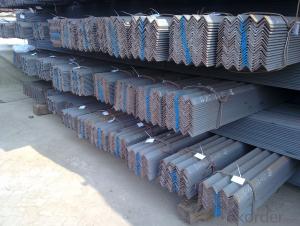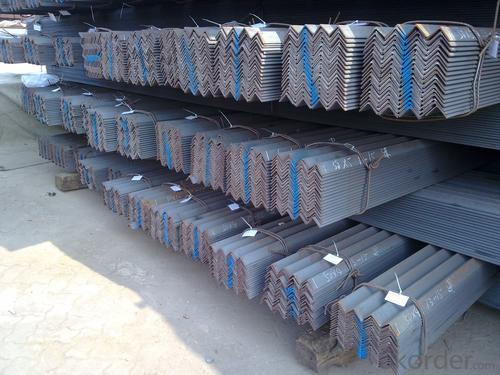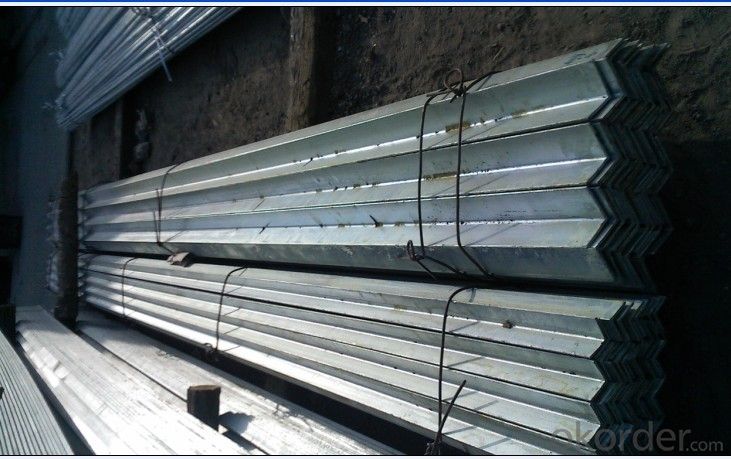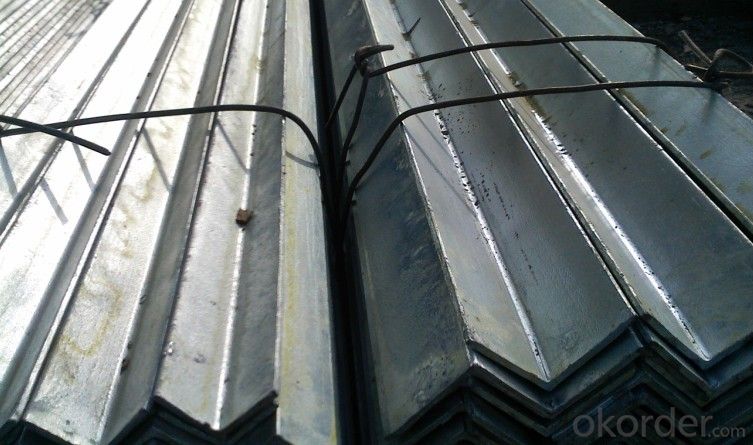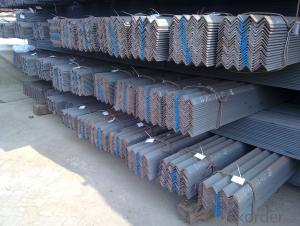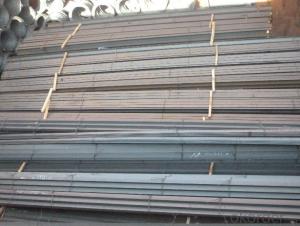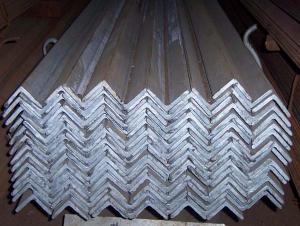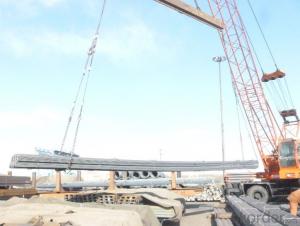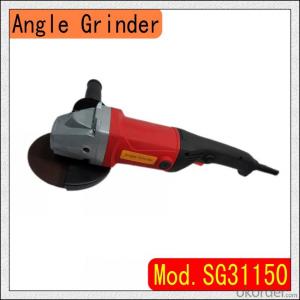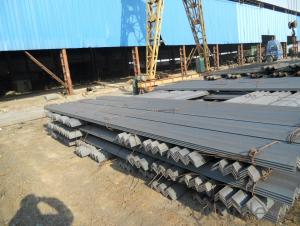angle
- Loading Port:
- China Main Port
- Payment Terms:
- TT OR LC
- Min Order Qty:
- -
- Supply Capability:
- -
OKorder Service Pledge
OKorder Financial Service
You Might Also Like
ANGLE BAR Details:
| Minimum Order Quantity: | Unit: | m.t. | Loading Port: | ||
| Supply Ability: | Payment Terms: | Package: | wire bundle |
Product Description:
Specifications of Angle Steel
1. Invoicing on theoretical weight or actual weight as customer request
2. Length: 6m, 9m, 12m as following table
3. Sizes
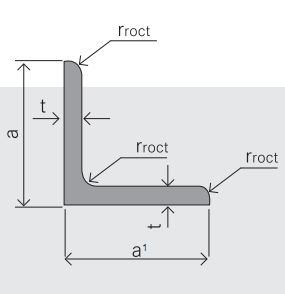
Sizes: 25mm-250mm | ||
a*t | ||
25*2.5-4.0 | 70*6.0-9.0 | 130*9.0-15 |
30*2.5-6.6 | 75*6.0-9.0 | 140*10-14 |
36*3.0-5.0 | 80*5.0-10 | 150*10-20 |
38*2.3-6.0 | 90*7.0-10 | 160*10-16 |
40*3.0-5.0 | 100*6.0-12 | 175*12-15 |
45*4.0-6.0 | 110*8.0-10 | 180*12-18 |
50*4.0-6.0 | 120*6.0-15 | 200*14-25 |
60*4.0-8.0 | 125*8.0-14 | 250*25 |
5. Payment terms:
1).100% irrevocable L/C at sight.
2).30% T/T prepaid and the balance against the copy of B/L.
3).30% T/T prepaid and the balance against L/C
6.Material details:
Alloy No | Grade | Element (%) | |||||
C | Mn | S | P | Si | |||
|
|
|
|
|
|
| |
Q235 | B | 0.12—0.20 | 0.3—0.7 | ≤0.045 | ≤0.045 | ≤0.3 | |
|
|
|
|
|
|
| |
Alloy No | Grade | Yielding strength point( Mpa) | |||||
Thickness (mm) | |||||||
≤16 | >16--40 | >40--60 | >60--100 | ||||
≥ | |||||||
|
|
|
|
|
| ||
Q235 | B | 235 | 225 | 215 | 205 | ||
Alloy No | Grade | Tensile strength (Mpa) | Elongation after fracture (%) | ||||
Thickness (mm) | |||||||
| ≤16 | >16--40 | >40--60 | >60--100 | |||
≥ | |||||||
|
|
|
|
|
|
| |
Q235 | B | 375--500 | 26 | 25 | 24 | 23 | |
Usage & Applications of Angle Steel
According to the needs of different structures, Angle can compose to different force support component, and also can be the connections between components. It is widely used in various building structures and engineering structures such as roof beams, bridges, transmission towers, hoisting machinery and transport machinery, ships, industrial furnaces, reaction tower, container frame and warehouse etc.
Packaging & Delivery of Angle Steel
1. Packing: it is nude packed in bundles by steel wire rod
2. Bundle weight: not more than 3.5MT for bulk vessel; less than 3 MT for container load
3. Marks:
Color marking: There will be color marking on both end of the bundle for the cargo delivered by bulk vessel. That makes it easily to distinguish at the destination port.
Tag mark: there will be tag mark tied up on the bundles. The information usually including supplier logo and name, product name, made in China, shipping marks and other information request by the customer.
If loading by container the marking is not needed, but we will prepare it as customer request.
Production flow of Angle Steel
Material prepare (billet) —heat up—rough rolling—precision rolling—cooling—packing—storage and transportation
- Q: How do you transport steel angles safely?
- Proper planning and adherence to specific guidelines are necessary for the safe transportation of steel angles. To ensure their safe transport, the following steps should be taken: 1. Secure the steel angles: Before transportation, it is important to securely fasten the steel angles. This can be achieved by using straps or chains to hold them firmly in place. Avoid any movement or shifting of the angles during transit by ensuring they are tightly secured. 2. Choose appropriate transportation equipment: Depending on the quantity and size of the steel angles, select suitable transportation equipment. Flatbed trucks or trailers with secure tie-down points are commonly used for this purpose. If needed, specialized equipment such as cranes or forklifts can be utilized for safe loading and unloading. 3. Safeguard the steel angles: To prevent damage during transit, it is crucial to protect the steel angles from potential hazards. This can be done by using adequate packaging materials like cardboard or wooden crates to cover and provide additional support. Additionally, consider using protective padding or blankets to prevent scratches or dents. 4. Ensure proper weight distribution: Maintaining proper weight distribution is essential for stability during transportation. Distribute the load evenly across the transportation equipment to avoid imbalance or tipping. If necessary, consult weight distribution guidelines or seek professional advice to ensure safe transportation. 5. Adhere to local regulations: Familiarize yourself with the transportation regulations and guidelines in your area. Ensure compliance with any specific requirements regarding load securing, maximum weight limits, or permits for oversized shipments. This will guarantee legal compliance and safe transportation. 6. Inspect and maintain the transportation equipment: Regularly inspect the transportation equipment for any signs of wear and tear. Check the condition of straps, chains, or tie-down points to ensure they are in good working condition. Proper maintenance of the equipment reduces the risk of accidents or incidents during transportation. 7. Plan the route and consider weather conditions: Before transporting the steel angles, carefully plan the route, taking into account any potential obstacles or road conditions that may affect safety. Be aware of height or weight restrictions on certain roads or bridges. Additionally, consider weather conditions such as heavy rain, snow, or strong winds, and adjust the transportation plan accordingly. By following these steps and taking necessary precautions, you can safely transport steel angles, minimizing the risk of damage, accidents, or injuries. Always prioritize safety and comply with applicable regulations for a successful transportation process.
- Q: What are the different corrosion protection methods for steel angles?
- There exists a range of corrosion protection methods for steel angles, which depend on the particular application and environmental conditions. Some commonly employed methods are as follows: 1. Galvanization: Coating the steel angles with a layer of zinc is a highly effective method of corrosion protection. The zinc layer acts as a sacrificial anode, corroding in place of the underlying steel. 2. Paint coatings: The application of a high-quality paint coating to the steel angles offers effective corrosion protection. The paint acts as a barrier, preventing moisture and corrosive substances from reaching the steel surface. 3. Powder coating: Similar to paint coatings, powder coating involves the application of a dry powder to the steel angles, followed by baking to create a durable and corrosion-resistant finish. 4. Epoxy coatings: For steel angles exposed to harsh environments or aggressive chemicals, epoxy coatings are commonly used. These coatings exhibit excellent adhesion and corrosion resistance. 5. Cathodic protection: This method involves the utilization of a sacrificial anode or impressed current to safeguard the steel angles from corrosion. The anode corrodes instead of the steel, providing long-lasting protection. 6. Barrier coatings: Barrier coatings, such as polyethylene or PVC wraps, create a physical barrier between the steel angles and the surrounding environment. This prevents moisture and corrosive substances from reaching the surface. 7. Hot-dip galvanizing: In this method, the steel angles are immersed in a bath of molten zinc, resulting in the formation of a thick zinc coating that offers superb corrosion protection. When selecting a corrosion protection method for steel angles, it is vital to consider the specific requirements of the application. Factors such as the environment, expected service life, and budget must be taken into account to ensure the most suitable method is chosen.
- Q: How do steel angles contribute to the overall stability of a building?
- Steel angles are an essential component of the overall stability of a building. They provide structural support and enhance the load-bearing capacity of the building framework. The angle shape of steel angles allows them to efficiently distribute and transfer the loads imposed on the structure, such as the weight of the floors, walls, and the roof, to the foundation. One of the key contributions of steel angles to the stability of a building is their ability to resist bending and buckling forces. The L-shaped design of steel angles helps to prevent the structural members from collapsing or deforming under heavy loads or external pressures. This resistance to bending and buckling ensures that the building remains structurally sound and stable, even in adverse conditions such as earthquakes or strong winds. Furthermore, steel angles are often used as bracing elements to provide lateral stability to the building. They are strategically placed in areas that require reinforcement against horizontal forces, such as wind or seismic activity. By connecting different structural components, steel angles help to distribute these lateral forces throughout the building, preventing excessive movement or deformation and maintaining the overall stability of the structure. In addition to their role in load-bearing and bracing, steel angles also contribute to the overall stability of a building through their durability and resistance to corrosion. Steel angles are typically made from high-strength steel, which offers excellent structural integrity and long-term reliability. This durability ensures that the building can withstand the test of time and remain stable throughout its lifespan. Overall, steel angles play a crucial role in enhancing the overall stability of a building. Their ability to resist bending and buckling forces, provide lateral stability, and their durability make them an integral part of the building's structural system. By effectively distributing and transferring loads, steel angles ensure that the building remains safe, secure, and stable, ensuring the well-being of its occupants and the longevity of the structure.
- Q: Can steel angles be recycled?
- Yes, steel angles can be recycled. Steel is one of the most recycled materials in the world, and steel angles can be recycled through various processes such as melting and refining, which allows them to be used in the production of new steel products. Recycling steel angles helps conserve natural resources, reduces energy consumption, and minimizes waste.
- Q: How can the angle iron tripod be welded or not?
- The angle iron can be made up of different force components according to the different structure, and can also be used as the connecting piece between the components. Widely used in a variety of architectural and engineering structures, such as beams, bridges, towers, hoisting and conveying machinery, ships, industrial furnace, reaction tower, container rack and warehouse shelves.
- Q: Can steel angles be used for shelving?
- Yes, steel angles can be used for shelving. Steel angles are commonly used in shelving systems as they provide strength, stability, and durability. They can be easily mounted on walls or used as supports for shelves, making them ideal for various storage applications.
- Q: How do steel angles resist corrosion?
- Steel angles resist corrosion through a process called passivation. Passivation is the formation of a protective layer on the surface of the steel that acts as a barrier against corrosive elements such as moisture, oxygen, and chemicals. Steel angles are typically made from stainless steel, which contains a minimum of 10.5% chromium. Chromium is a key element that enables the formation of a thin, invisible layer of chromium oxide on the surface of the steel. This oxide layer is highly stable and prevents further corrosion from occurring. The chromium oxide layer acts as a physical barrier, protecting the underlying steel from the corrosive effects of the environment. It is also self-healing, meaning that if the oxide layer is damaged or scratched, it will naturally reform and restore its protective properties. Additionally, stainless steel angles may contain other alloying elements such as nickel and molybdenum, which further enhance their corrosion resistance. These elements contribute to the formation of a more stable oxide layer and provide additional protection against localized corrosion, such as pitting and crevice corrosion. Furthermore, steel angles can be treated with various surface finishes or coatings to enhance their resistance to corrosion. These treatments can include processes like hot-dip galvanizing, electroplating, or applying organic coatings. These additional layers act as an extra barrier, preventing corrosive substances from reaching the steel surface. Overall, steel angles resist corrosion by forming a protective layer of chromium oxide on their surface, which acts as a barrier against corrosive elements. The inclusion of other alloying elements and the application of surface treatments further enhance their ability to withstand corrosion in various environments.
- Q: What are the most common sizes of steel angles?
- Steel angles are commonly found in sizes ranging from 1/2 inch to 6 inches wide, with thicknesses varying from 1/8 inch to 1/2 inch. These sizes are readily accessible in the market and widely utilized in construction and industrial sectors. It is worth mentioning that certain projects or industries might necessitate custom sizes or larger dimensions to meet specific structural needs.
- Q: What are the advantages of using steel angles?
- There are several advantages of using steel angles. Firstly, steel angles provide excellent structural support due to their high strength and durability. They can withstand heavy loads and extreme weather conditions, making them ideal for construction projects. Additionally, steel angles are versatile and can be easily fabricated, cut, and welded to meet specific design requirements. They are also cost-effective, as they have a long lifespan and require minimal maintenance. Lastly, steel angles offer great aesthetic appeal, making them a popular choice for architectural applications.
- Q: How do steel angles perform in terms of thermal expansion and contraction?
- Steel angles have a relatively low coefficient of thermal expansion, which means they expand and contract less compared to other materials when subjected to temperature changes. This property makes steel angles highly stable in terms of thermal expansion and contraction. Consequently, they are widely used in various structural applications where temperature variations are expected. Steel angles provide structural integrity and stability, even in environments with significant temperature fluctuations, making them a reliable choice for construction and engineering projects.
Send your message to us
angle
- Loading Port:
- China Main Port
- Payment Terms:
- TT OR LC
- Min Order Qty:
- -
- Supply Capability:
- -
OKorder Service Pledge
OKorder Financial Service
Similar products
Hot products
Hot Searches
Related keywords
